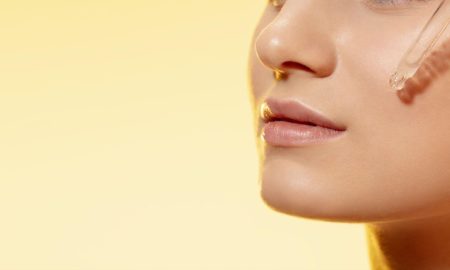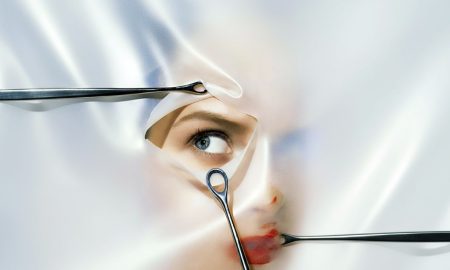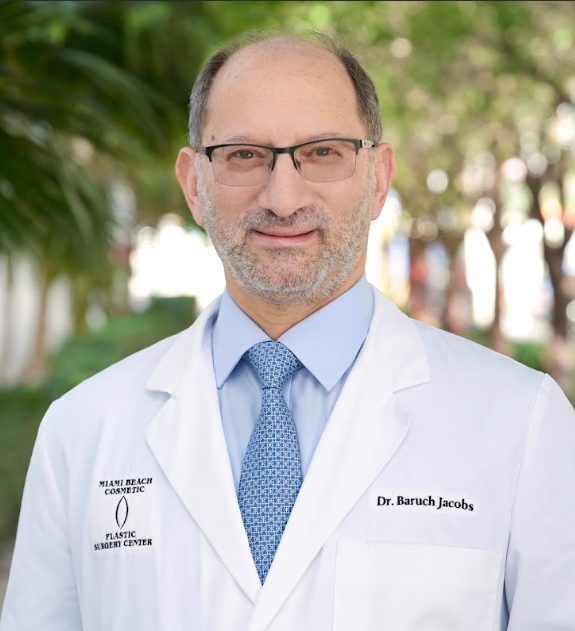Elizabeth Laikhter BA contributed to this article.
Dr. Samuel Lin is a double board-certified Plastic Surgeon and Associate Professor of Surgery at Harvard Medical School who practices in Boston, Massachusetts. Dr. Lin is an active Board Member of the Susan G. Komen for the Cure and Bright Pink Foundations. Dr. Lin is active in both basic science and clinical research with a focus on face/neck/nose surgery (rhinoplasty), breast surgery (reduction, lift, and reconstruction), and body contouring. He collaborates with engineers, scientists, and other plastic surgeons at other institutions within the New England area, nationally, and internationally. He is the editor of several medical textbooks including Aesthetic Atlas of the Head and Neck, Atlas of Body Contouring, and Plastic and Reconstructive Surgery Pearls of Wisdom and Pearls of Wisdom Second and Third Editions. Haute Beauty Expert Dr. Samuel Lin introduces a surgical migraine treatment that has proven to decrease migraine heachaches.
 Photo Credit: ShutterstockMigraine headaches affect nearly 1 in 6 adults living in the United States (1) and cause debilitating symptoms that impact the ability to perform daily activities. Headaches are consistently one of the top five reasons patients visit the emergency department. Several preventive and abortive treatments exist for migraines and work well for most patients. However, some patients have tried almost every treatment and continue to have severe migraines. Plastic surgeons may be able to help those patients who continue to have inadequate relief with medical treatment.
Photo Credit: ShutterstockMigraine headaches affect nearly 1 in 6 adults living in the United States (1) and cause debilitating symptoms that impact the ability to perform daily activities. Headaches are consistently one of the top five reasons patients visit the emergency department. Several preventive and abortive treatments exist for migraines and work well for most patients. However, some patients have tried almost every treatment and continue to have severe migraines. Plastic surgeons may be able to help those patients who continue to have inadequate relief with medical treatment.
History of Surgical Migraine Treatment
The idea that surgery could treat migraine headaches came to fruition after a patient reported that not only was she happy with the aesthetic result of a brow lift with Dr. Bahman Guyuron, but she was ecstatic that her migraines improved. This prompted further investigation of patient outcomes after brow lift surgery, which revealed that for patients with a history of migraine, almost 80% experienced an improvement in their headaches after the brow lift procedure with partial muscle resection (2). This suggested that migraine headaches could be caused by the compression of sensory nerves by facial muscles. From this knowledge, plastic and reconstructive surgeons have studied and developed proven surgical and injection-based treatment methods for migraine headaches.
Who is eligible for surgical migraine treatment?
Not everyone should get surgical or injection treatment for their migraines. Firstly, there are several types of headaches, and only patients with migraine headaches are eligible. Patients who are good candidates have an established migraine diagnosis, are under the care of a neurologist, have greater than 15 migraines a month, and have not experienced a reduction in their symptoms by at least 50% after standard treatments. It is important to try medical treatment options before proceeding to more invasive treatments. If you have migraines, it is important to regularly see a migraine specialist or neurologist. They will ultimately be able to determine whether it is appropriate for you to consider surgical treatment for your migraines.
Insurance coverage for surgical migraine treatment
Some insurance companies cover surgical treatment for migraine headaches for patients who meet eligibility criteria. This requires documentation of 15 or more migraines a month at baseline and inadequate improvement with at least three prophylactic medications. It is important to check with your insurance company prior to pursuing surgical migraine treatment.
What to expect at the consultation visit
Prior to surgical migraine treatment, all patients have a consultation with a board-certified plastic surgeon. At the visit, you should be prepared to discuss your medical and migraine history in detail. Your surgeon will perform a thorough physical exam of facial nerves and muscles. Typically, the surgeon will inject either Botox or a nerve-blocking anesthetic at the point where your migraines originate, to better determine whether surgery will help alleviate the symptoms. Lastly, they will give their recommendation regarding whether you are a good candidate for surgical migraine treatment, and which procedure they recommend. This is also an opportunity to ask any questions you may have about your symptoms or migraine surgery.
 Photo Credit: ShutterstockThe procedure: surgical nerve decompression
Photo Credit: ShutterstockThe procedure: surgical nerve decompression
Surgical treatment for migraines is called surgical nerve decompression. The surgery is performed under general anesthesia, intravenous sedation, or local anesthesia. The surgeon will create an incision in the location of your migraine trigger site. For trigger sites at the frontal (forehead) region, incisions are hidden in the eyelid crease or in the hairline. To address trigger sites in the temporal region, incisions are typically hidden in the hairline near the temple. For patients with headaches at the back of the head (occipital region), incisions are either vertical or horizontal across the back of the head within the hair. Some hair may need to be cut or shaved in this case. Once the surgeon makes the appropriate incision, they will release nerves from structures that are compressing them. These may include muscle, bone, cartilage, connective tissue, or blood vessels. After the nerves are decompressed, the surgeon will close incisions carefully with sutures, skin adhesives, clips, or tape. Your plastic surgeon will provide instructions for proper incision care, and schedule a follow-up visit to monitor your progress.
Injection treatments for migraines
In some cases, your surgeon may either not recommend surgery, or you may choose to have a less invasive treatment. Botulinum toxin injections and nerve blocks are less invasive options which work in the following ways:
● Botulinum toxin (Botox) injections are a non-surgical option for treatment-resistant migraines. Botulinum toxin is derived from bacteria and acts at nerve endings to prevent the release of a molecule that transmits nerve signals of motor nerves, thereby decreasing muscle contraction. By relaxing muscles, Botox helps decrease nerve compression by surrounding muscles, which can alleviate migraines.
● Nerve blocks are another non-surgical injection treatment for migraines. They are quick procedures that can be done in the office setting. A solution composed of an anti-inflammatory steroid and a long-acting local anesthetic is injected into the area near the nerve at the site of migraine headache origination. The local anesthetic prevents sensory nerve perception of pain. Pain relief can begin within 15 minutes of the nerve block and last days, weeks, or months. Whereas Botulinum toxin acts on motor nerves, nerve blocks target sensory nerves.
Sources
1. Burch R, Rizzoli P, Loder E. The Prevalence and Impact of Migraine and Severe Headache in the United States: Figures and Trends From Government Health Studies. Headache. 2018 Apr;58(4):496-505. doi: 10.1111/head.13281. Epub 2018 Mar 12. PMID: 29527677.
2. Guyuron B, Varghai A, Michelow BJ, Thomas T, Davis J. Corrugator supercilii muscle resection and migraine headaches. Plast Reconstr Surg. 2000 Aug;106(2):429-34; discussion 435-7. doi: 10.1097/00006534-200008000-00030. PMID: 10946944.
For more information, visit Dr. Samuel Lin's social media:























